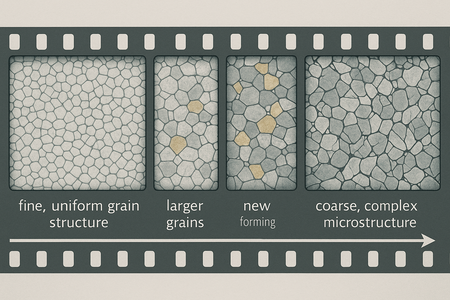
Spatiotemporal microstructure data are the key results of continuum full-field and atomic-scale computer simulations, as well as cutting-edge diffraction microscopy experiments. Typically represented as voxel, point, line, or finite-element meshes, these data cover a variety of materials information, such as the spatial distribution of crystal defects and their correlation with three-dimensional field quantities like temperature, mechanical stress and strain, or concentration fields of chemical species. In addition, the large variety of computer codes within the MSE community, limits interoperability and repurposeability when handshaking between different microstructure modeling tools. Here, we aim to implement an infrastructure that enables users to assess the time evolution of microstructures in correlation with field data across different length and time scales in a code-agnostic representation as FAIR digital objects that can complement or replace existing code-specific outputs. Proof-of-concept workflows are developed, which exemplify how such descriptions and ontology connections can be exported from existing MSE simulation tools, connecting full-field microstructure simulation models and atomistic modeling with property prediction tools and experimental data.
| Main requirements: - FAIR data schema for microstructures, including meta data and semantic meaning of all items - Focus on the integration of existing open-source tools within workflows mimicking materials processing routes - Parsers for common commercial tools will be made available - Ready-to-use open-access demonstrators that can be adapted to individual user requirements |
| Main Task Area: TA-WLE Other related Task Areas: TA-MDI, TA-SAI |
| Possible connections within NFDI: NFDI4Ing, FAIRmat |
| Material/Data: - Spatiotemporal point/voxel data of phases and crystal orientations - Tensorial or scalar field data from experiments or computer simulations of microstructure evolution at the microscopic and atomic scale. |
| Main Success Scenario: The user can characterize the geometrical arrangement of phases and grains in the material and employ flexible workflows to describe the evolution of microstructures during typical materials processing routes. This is achieved by flexibly exchanging spatiotemporal data between simulation tools for materials processing and property prediction from atomistic to microstructural length scales. |
| Added value for the MatWerk community: A semantic description of microstructural features like phases, grains, grain boundaries and precipitates in form of an FDO employing a widely accepted data schema. This enables users to identify characteristic features of microstructures and their time evolution agnostic of specific data formats or implementations in a simulation code and to predict mechanical properties along typical materials processing routes. |
Discover each data management component of IUC07 in its architecture.
NFDI-MatWerk
Funded by the Deutsche Forschungsgemeinschaft (DFG, German Research Foundation) under the National Research Data Infrastructure – NFDI 38/1 – project number 460247524.
NFDI-MatWerk
Funded by the Deutsche Forschungsgemeinschaft (DFG, German Research Foundation) under the National Research Data Infrastructure – NFDI 38/1 – project number 460247524.
Subscribe to our newsletter for regular updates about materials science topics!
After subscribing, you will receive an email from us with a confirmation
link.
Only after clicking this link your registration is completed.